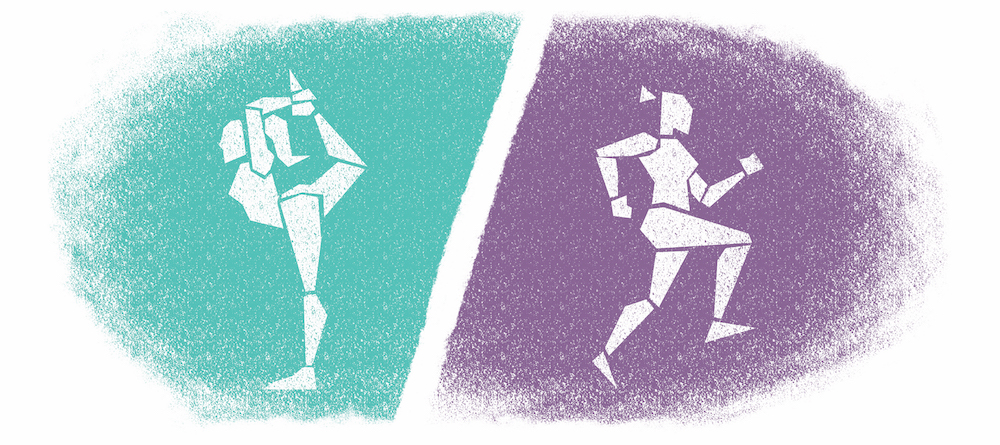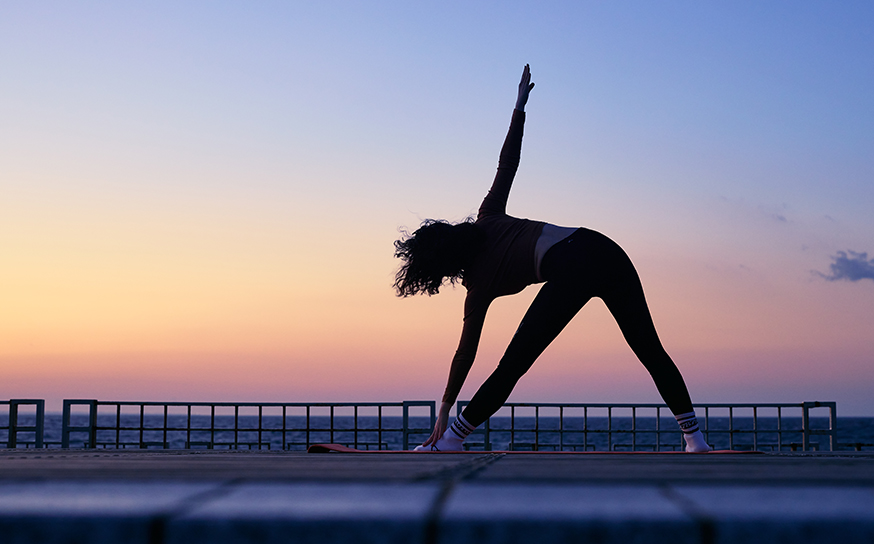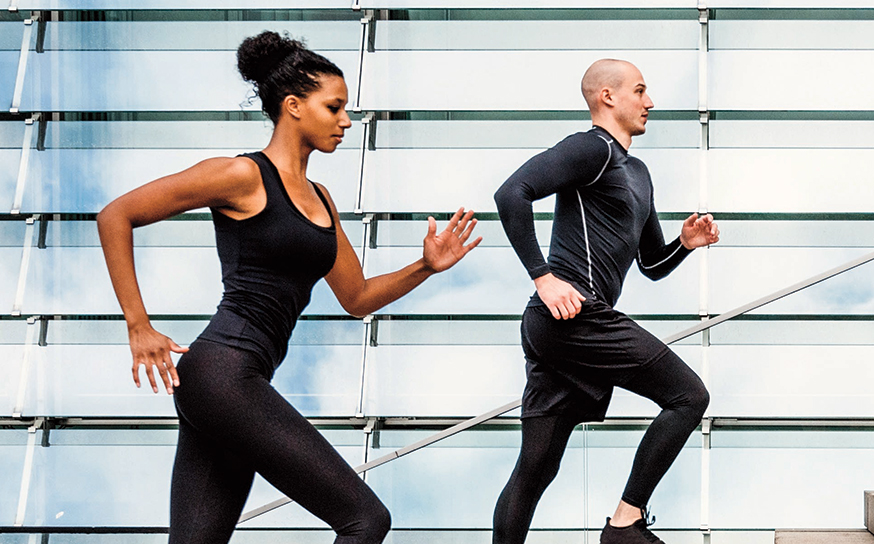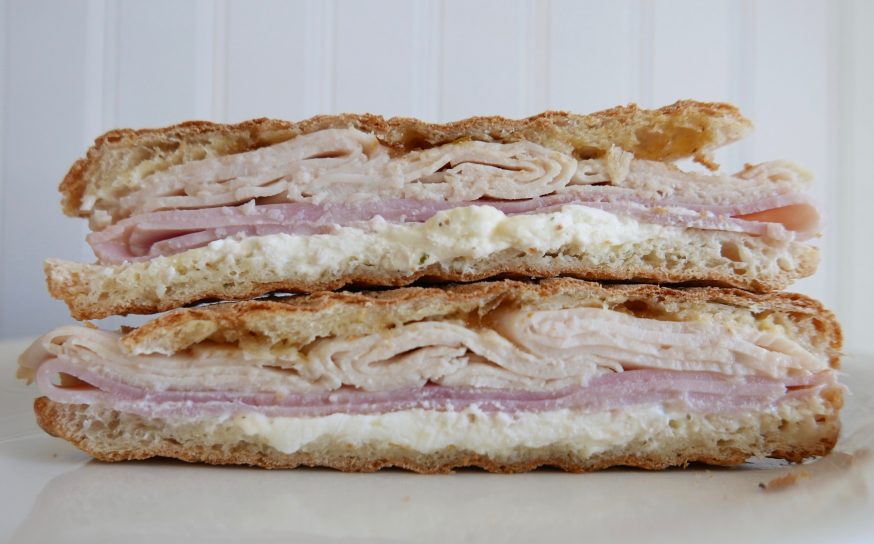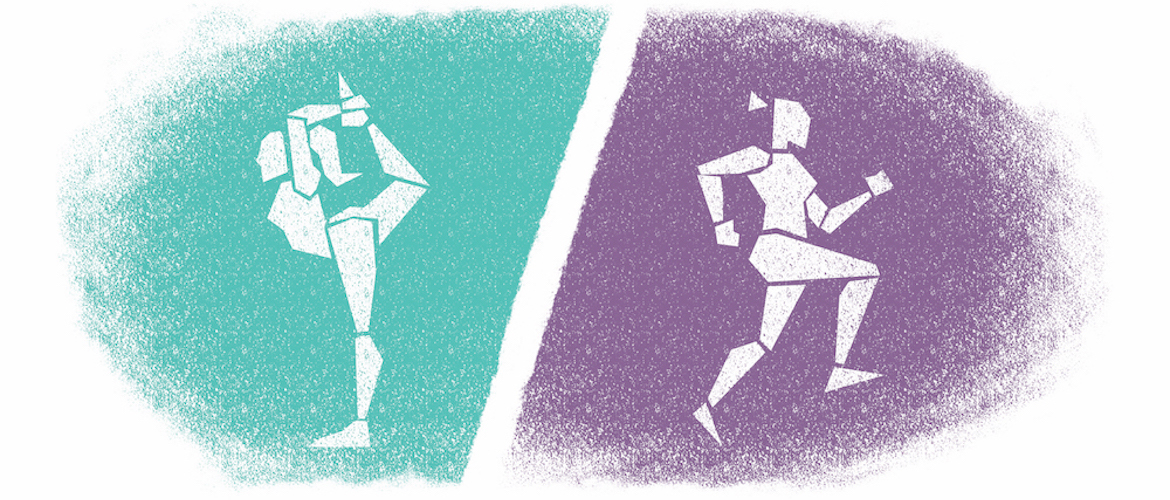
Do you really need to break a sweat to be fit? And just what is fitness, anyway?
Trying to define what fitness is and how to best achieve it is maddeningly elusive, not least of all because people casually lump “health and fitness” into a single concept.
-
CategoryHealth
Written by Anne M. Russel, Illustrations by Christine Georgiades
You’re standing in line, sweaty and red-faced, waiting for your post-run latte when you notice Ms. Perfect Yogini. Her high ponytail is smooth and neat, her Lululemon garb free of sweat stains, her body lithe and trim.
“Yeah, sure she looks good,” you think, “but I’m way fitter. I just ran 5 miles.”
Well, maybe not. Trying to define what fitness is and how to best achieve it is maddeningly elusive, not least of all because people casually lump “health and fitness” into a single concept.
The federal government’s Office of Disease Prevention and Health Promotion tries to keep it simple: The most recent guidelines (from 2008) indicate that 2 hours and 30 minutes
a week of moderate-intensity aerobic activity, such as brisk walking, consistently reduces the risk of many chronic diseases and other adverse health outcomes.
That means that you and Miss Yogini are pretty much tied on the baseline health benefits, provided that she’s practicing some kind of yoga that elevates the heart rate. Sweating is optional.
But what about just fitness by itself, which sports physiologists define as having skills like balance, coordination, flexibility, endurance, speed and strength? Neither you nor the yogini are going to win that face-off if you’re single-sport athletes. Chances are, she will beat you on balance and flexibility, but you will win at endurance and speed. Strength is a toss-up.
Cardiac electrophysiologist John Mandrola is an avid cyclist and chief cardiology correspondent for medscape.com. “If a person’s goal is to live as long as possible and they don’t smoke, maintain a normal body weight, have good social support and are sleeping well, I’m not sure how much peak fitness matters. The added benefit to doing more than ‘normal’ amounts of exercise is probably small,” he observes.
Dr. Mandrola, who is also the author of a new book about the dangers of over exercise for endurance athletes, called The Haywire Heart, does recommend staying fit so that you can enjoy a more active old age. “I would definitely counsel people to do multiple activities,” he says. “Mix cycling and yoga or swimming and running. You want to have both functional fitness—being able to put your socks on while standing up—and aerobic fitness.”
In fact, the real winner is the one who cultivates the highest degree of functional fitness. Nancy Radding, fitness director at the Oaks at Ojai, sums it up as, “People who are the most fit are those who have the energy, coordination and strength to do what they want to do.”
The Building Boom in the Valley for Senior Living Communities Has Escalated
Upscale livin’ for active retirees.





